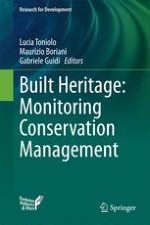2015 | OriginalPaper | Chapter
Survey of Repaired and Artificial Stones of the Archaeological Site of Pella Five Years After Application
Authors : Ioanna Papayianni, Maria Stefanidou, Vasiliki Pachta
Published in: Built Heritage: Monitoring Conservation Management
Publisher: Springer International Publishing
Activate our intelligent search to find suitable subject content or patents.
Select sections of text to find matching patents with Artificial Intelligence. powered by
Select sections of text to find additional relevant content using AI-assisted search. powered by
